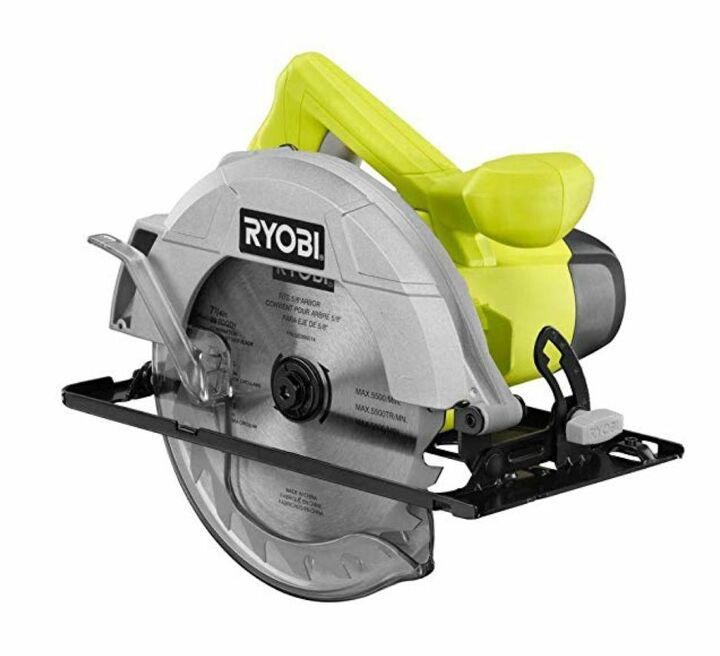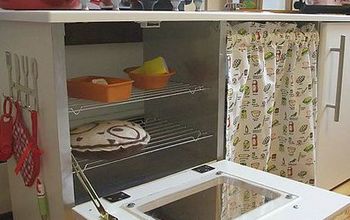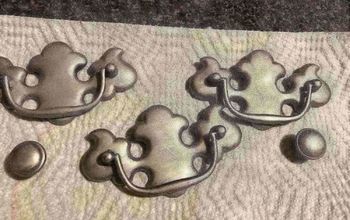Ryobi Circular Saw Review - A Cheap and Effective Power-Saw

If you are relatively new to DIY like me, you probably feel intimidated by sharp and noisy power tools. It took me some courage to purchase and use my first circular saw, but once I did it, I wondered why it had taken me so long.
You do need to be cautious when using any power tool, but if you take the time to learn how to safely operate them, a world of possibilities will open to you.
See post: Ryobi 13 amp 71/4” circular saw/Ryobi Tools
Before jumping into this particular Ryobi saw, let me give you a brief introduction of what is a circular saw and how it can be used.
A circular saw is an electric tool that uses a toothed round blade to cut different materials, such as wood, metal, masonry or plastic depending on the blade selected.
It is a pretty versatile handheld tool and will get you covered on most DIY projects that require cutting. If you are getting your first power-saw and don’t know what type would be the most useful for different projects, a circular saw is a great one to start, and Ryobi is an affordable and dependable brand that won’t let you down.
I purchased my circular saw over four years ago and I so far, I have only used it to cut wood, so the opinions I share in this article are exclusively related to my experience using this tool on wood.
Here are some pros and cons of this Ryobi circular saw, compared to other tools with the same or similar functions.
Pros
- Affordable, great value
- More versatile than a miter saw
- Basic, no bells and whistles you won't need
- Superior cutting power compared to a cordless version
- Compact and easy to store
Cons
- Short power cord, you will need and extension cord
- The laser is not a reliable guide for straight cuts
- Not as portable as a cordless tool
- Requires some practice until you get it right
- Noisy
Ryobi - The "DIY Tool Brand"
Ryobi is a Japanese manufacturer mostly known in the US for their power tools. They have grown popular in this country thanks to their affordable prices, decent quality, and wide distribution via Home Depot and Amazon. Ryobi is generally recognized as a “DIY tool brand” but many professionals use their products for smaller jobs.
The Ryobi 13-Amp 71/4” corded circular-saw costs around $36-40. You can find cheaper options by other brands, especially online, but most equivalent saws range between $70-120.
The company offers a three-year warranty for all their power-tools if they are used for personal, family, or household projects, which is a pretty good one for this kind of product.
How to Use a Circular-Saw
There are a few things to check, and some adjustments to make before
using a circular saw. Do not skip these steps if you want to work safely and ensure good results. Here is what you should do.
- Draw the cut line(s) on your wood of workpiece
- Make sure you are using the right blade for the material you want to cut
- Secure your wood to a table or workbench with clamps
- Place the saw on top of the wood and use the blade depth knob to raise or lower the blade, adjusting it to the height/thickness of your wood
- Plug the cord in and always keep the cord to your side or back, never in your working area
- Place the saw on the wood and align the blade to your cut line
- Push the unlock button and the trigger to start the saw (make sure the blade is not touching the wood at this point)
- When the blade is spinning at full speed, begin pushing the saw slowly and steadily forward to make the cut
Ryobi has a great short video on its website that demonstrates the above steps.
See post: How to Use a Circular Saw/Ryobi
These are the types of cuts you can make with a circular saw.
Five Bonus Tips Based on my Experience
I bought my Ryobi circular saw with one big project in mind: installing shiplap on my entryway walls. I had the plywood sheets cut into six-inch wide planks at Home Depot, but still needed to make additional cuts to each plank, including miter (angled) cuts for the wall under the staircase. The project was a success and I couldn’t have done it without my circular saw and my incredibly helpful husband!
See post: Pat Rios | The Wood Spa|Shiplap Walls Made of Plywood
As a newbie on power-saws, I learned a few things the hard way, by making mistakes, so here are some extra tips for you to avoid the same frustrations.
- Even if you hate manuals (I do!) study how to use this type of saw beforehand. Read blogs or watch YouTube videos to get the full idea.
- Practice a few times on scrap wood before moving on to your actual project.
- Never try to cut any piece without firmly securing it to a table or bench.
- Always draw your cut line to use it as a guide. Don’t trust the laser or your eyes if you want precision.
- If you need to make accurate longer cuts, consider getting a circular saw guide or track.
See post: Saw Guide/Track/Amazon
I hope this article has encouraged you to get a circular saw and finally tackle those DIY projects you’ve been dreaming of for so long. It is a low investment and you will be surprised by how much you can get done with it.
If you have your own experience with a circular saw or any other Ryobi tools, please share them with us.
Written for the Hometalk community by: Pat Rios | The Wood Spa
Enjoyed the project?
Suggested materials:
- Ryobi Circular Saw
































Frequently asked questions
Have a question about this project?